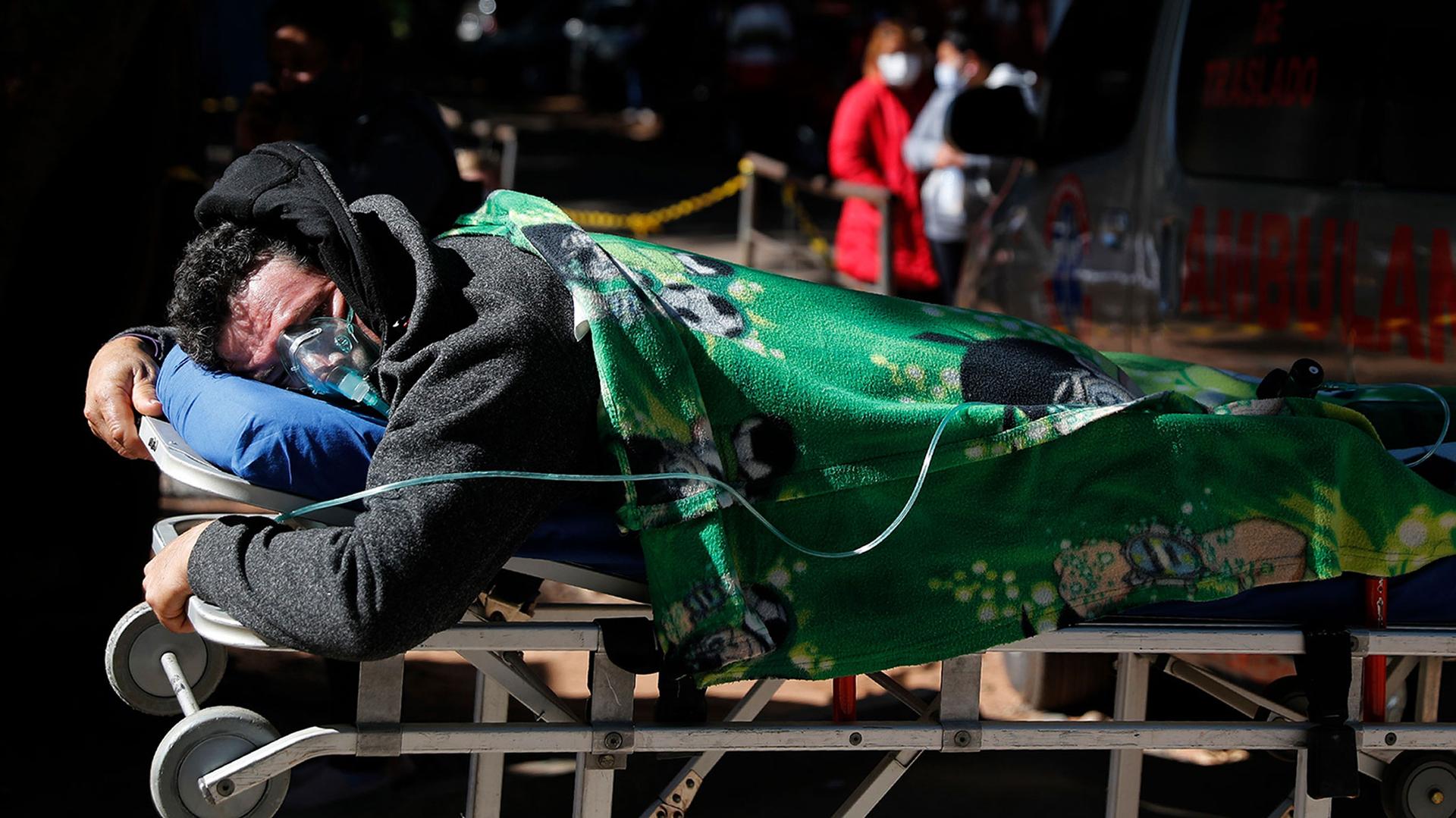Latin Americans now make up about a third of all COVID-19 deaths globally, even though the region accounts for just 8% of the world’s population.
Marcia Castro, a Brazilian demographer and chair of global health and population at the T.H. Chan School of Public Health, has been researching the virus and its impact in the region. She has watched the downward spiral in Brazil with horror.
The situation is startling as she reviews timelines and data.
“By April 25, the number of COVID deaths in 2021 surprassed all deaths in 2020,” she recently told The World in an online discussion with Harvard’s T.H. Chan School of Public Health.
Related: ‘Bolsonaro, get out!’: Protesters across Brazil call for president’s ouster
Countries like Brazil and Uruguay continue to hit grave milestones. In some Brazillian cities, for example, deaths have exceeded births.
“That’s a demographic pattern that Brazil had not observed before,” Castro said.
Pregnant women are also dying in higher numbers, so much so that authorities last month cautioned people against having children until the pandemic subsides.
At a recent briefing, Dr. Carissa Etienne, head of the Pan American Health Association, said that it’s not just Brazil: The pandemic has disrupted life-saving services in nearly half of the countries throughout the Americas.
The pandemic [could] obliterate more than 20 years of progress in expanding women’s access to family planning and tackling maternal deaths in the region.”
“If this continues, the pandemic is expected to obliterate more than 20 years of progress in expanding women’s access to family planning and tackling maternal deaths in the region,” she warned.
More than a million deaths have been recorded, but the true toll is suspected to be much higher, said Etienne. And Peru on Monday announced a sharp spike in its COVID-19 death toll, with more than 180,000 fatalities since the pandemic hit the country.
The pandemic is having an outsized impact throughout Latin America. And it is widening the gap of inequalities.
Plus, Latin America faces another disadvantage: It relies heavily on medicines and the raw materials needed for its vaccines from outside the region — all of which are currently in short supply. Scaling up local manufacturing and regional coordination will be critical, but it may take time.
Related: ‘Difficult years’: Brazil’s fishing communities struggle to stay afloat during pandemic
To Castro, Brazil’s experience is a cautionary tale of what happens when infections go unchecked and vaccination rates lag. Since the start, the government there opposed measures that could have helped slow the spread. It promoted ineffective treatments and infections multiplied. It was a perfect storm for the more transmissible P1 variant to emerge.
Castro and other researchers found that P1 may be more apt to reinfect those who have already been sick — a worrying trend she’s also found in Peru.
Now, Brazil’s outbreak is spilling over to other parts of the region, including its neighbor to the south.
“Uruguay … that last year managed to avoid a high burden … became the country in Latin America with the highest daily number of cases per 100,000 people.”
“Uruguay, which was a country that last year managed to avoid a high burden, and did a pretty great job, saw a major surge, and became the country in Latin America with the highest daily number of cases per 100,000 people since early April, and the highest daily number of deaths per 100,000 people since mid-April,” she said.
Uruguay had followed the science, said Castro. The key to its success was its ability to plan ahead and contain infections without needing to do a lockdown. But the border with Brazil is fluid, which made it easy for more transmissible variants like P1 to spread.
Meanwhile, people thought the job was already done and assumed COVID-19 was behind them.
It’s this combination of variants and complacency that brought many communities to the brink, she said. Argentina recently entered a strict lockdown. Chile, a world leader in its COVID-19 vaccine efforts, also saw a rise in cases.
The country had secured enough doses in advance for its entire population, but in December, with the warm weather, people started to travel for summer holidays before getting vaccinated. Castro said that places let their guards down too soon, right as more transmissible variants arrived.
All of this points to a bigger story beyond Latin America, said Castro.
It’s about whether societies choose to go their own ways, dividing between haves and have nots, or whether the world unites in solidarity: Understanding that no one is in the clear until everyone is.
“We’re only going to be OK when we control the situation in every single country,” she said.
